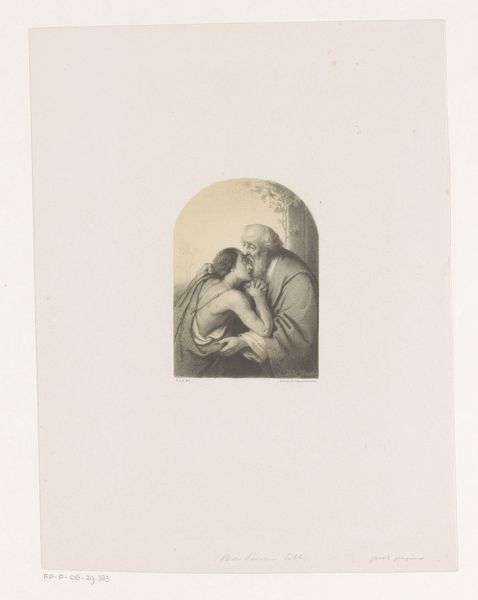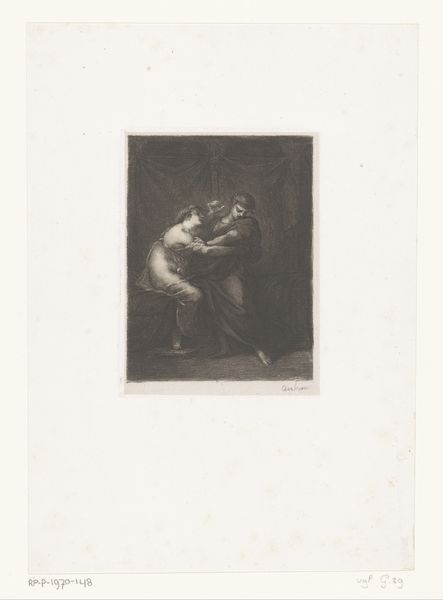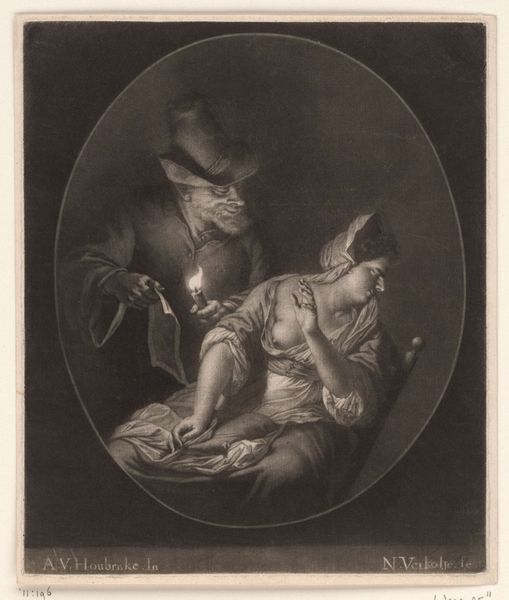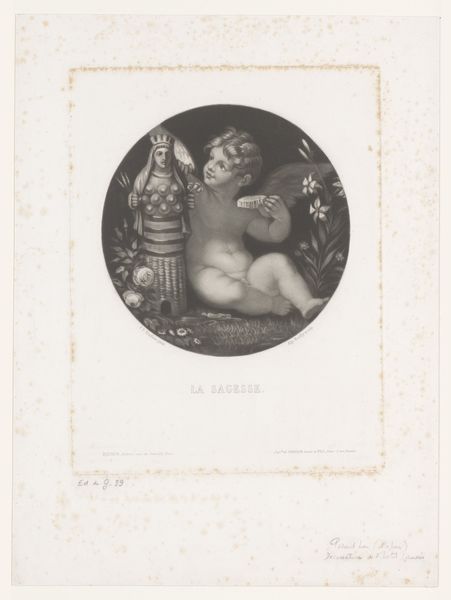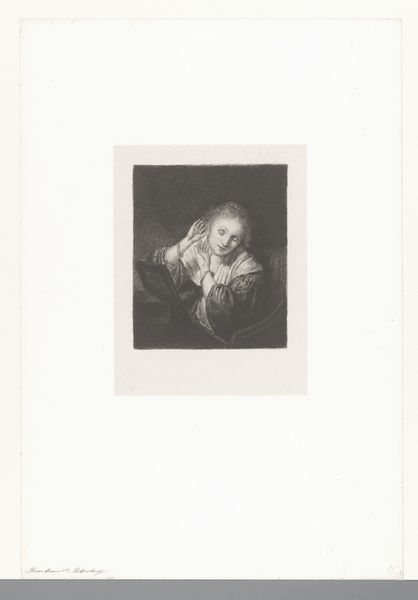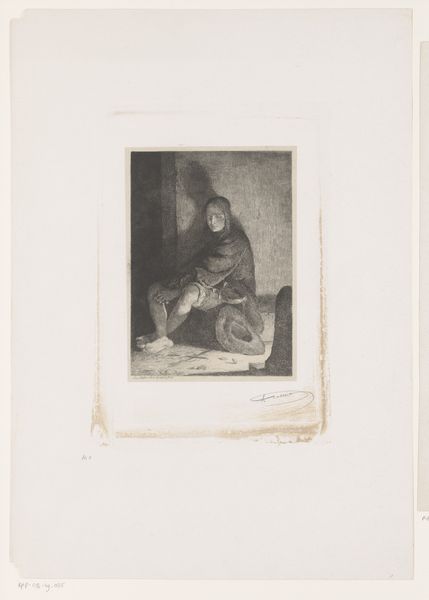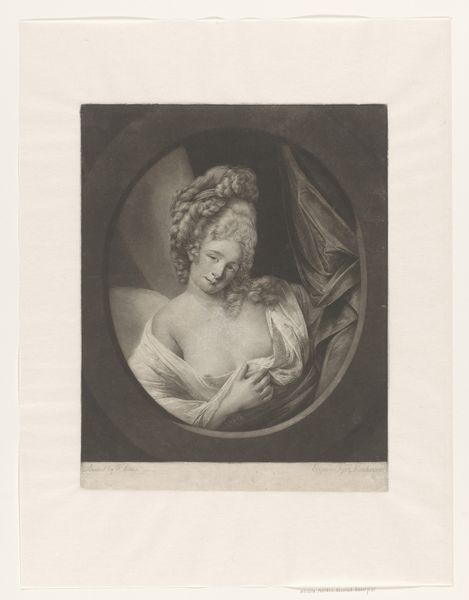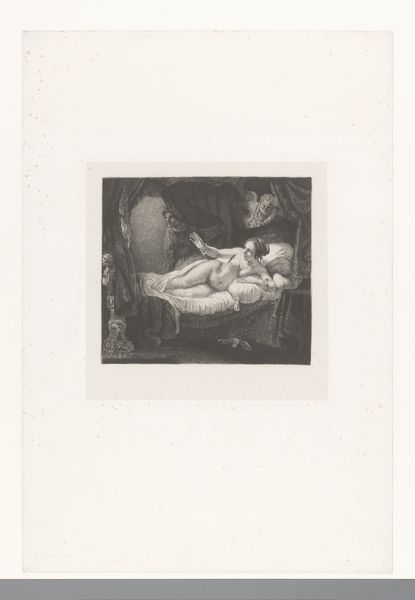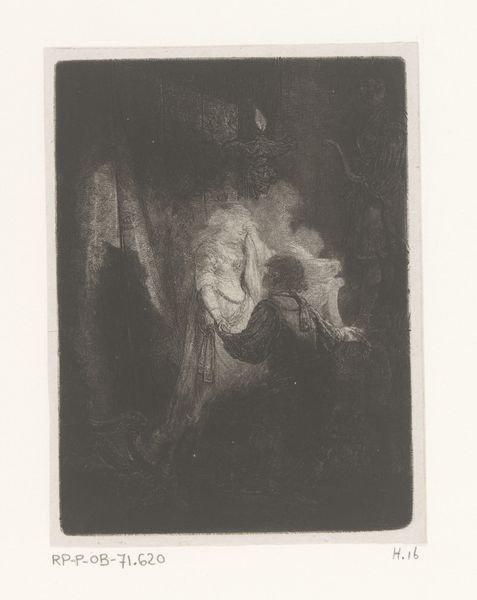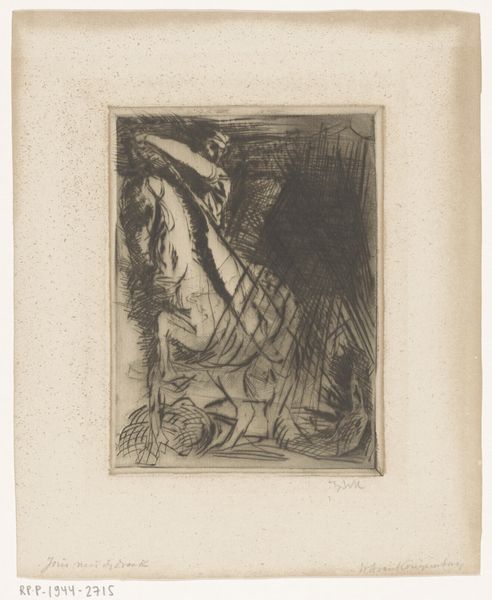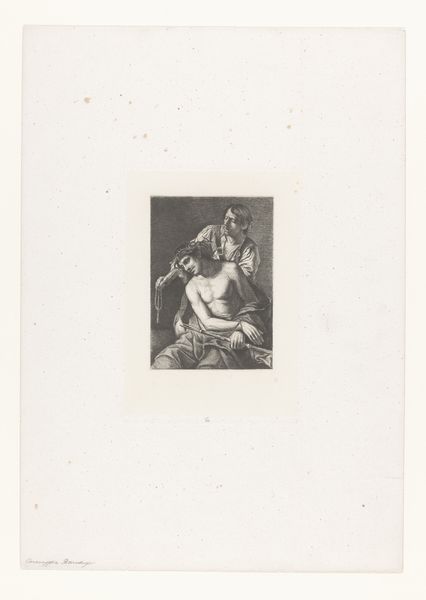
Dimensions: 4 3/4 x 3 11/16 in. (12.1 x 9.4 cm) (image)5 11/16 x 4 1/2 in. (14.4 x 11.4 cm) (sheet)
Copyright: Public Domain
Editor: So, this is "The Holy Family" by Jean-Pierre Norblin de la Gourdaine, dating from around 1774 to 1789. It's an etching and drypoint print. It feels very intimate, almost like a hidden scene, captured in this tight oval composition. What strikes you when you look at it? Curator: The visual language immediately calls to mind cycles of life, Editor. Look at the oval framing; it's a traditional symbol of the cosmic egg, of potential and birth, isn't it? The dark background, achieved through etching, presses in, making the figures seem to emerge from primordial darkness, which is visually compelling. Editor: I see what you mean. So, is that darkness also symbolic? Curator: Precisely! It could represent the unknown, the chaotic world before divine order, or even the personal struggles one overcomes to reach enlightenment. Note how the figures are grouped—the protective mother, the sleeping child, and a looming but perhaps also watchful, father figure? Editor: It’s interesting that you call the oval the cosmic egg. I hadn't considered the composition playing into that theme so directly, it seems so subtle. Curator: Exactly. The Holy Family is one of the West’s foundational stories of potentiality, but consider that Norblin has used the drypoint technique for expressive lines that convey a deep, resonant message about cultural memory. What sort of memories, conscious or not, might an image like this invoke? Editor: The importance of family, certainly, maybe the anxieties around raising a child in an uncertain world… I guess that’s a pretty timeless theme. I now see so many possible entry points that I didn't even consider before. Curator: Visual symbols are so potent, carrying emotional and psychological weight that extends far beyond the purely representational, and they echo through history. Editor: This really enriches the way I understand the piece! Thank you for sharing.
Comments
minneapolisinstituteofart almost 2 years ago
⋮
Jean-Pierre Norblin de la Gourdaine was a French painter and printmaker active in Poland in the late 18th century. Norblin's charming miniature etchings, representing mostly male heads, street sellers, and vagabonds, reflect both in subject and technique the profound influence of Rembrandt's prints. Norblin was also drawn to Polish subjects, capturing the unfamiliar, exotic world around him in his depictions of men with colossal fur hats and curled moustaches, Cossacks, and Polish historical figures.
Join the conversation
Join millions of artists and users on Artera today and experience the ultimate creative platform.
